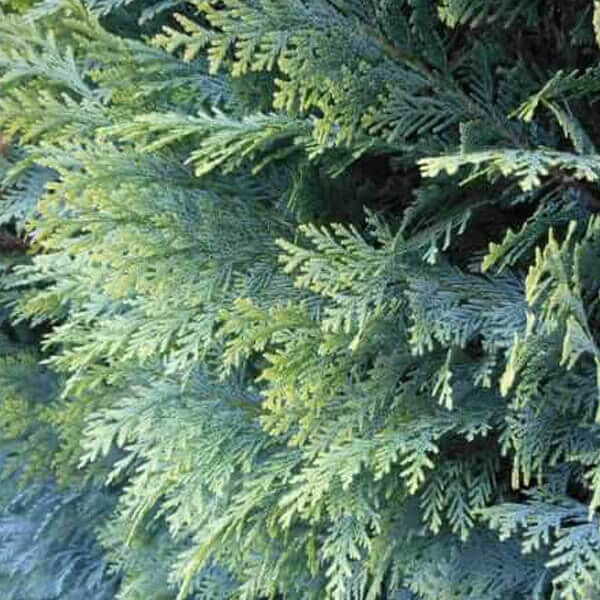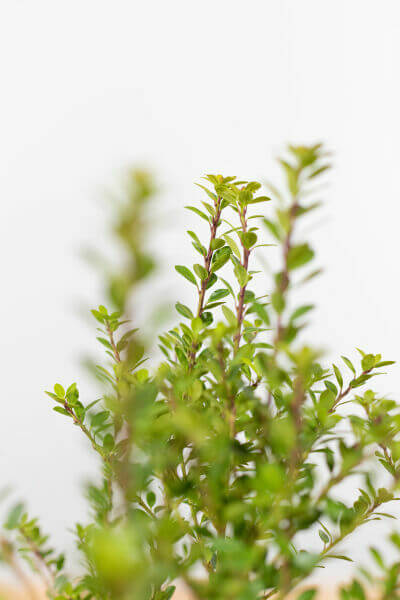Low-growing Hedging Plants For Borders
Low-growing Hedging Plants For Borders
Blog Article
Best Hedging Plants For Garden Screens
Boost your garden's appeal with lavish hedge ranges such as Yew (Taxus), Thuja, Laurel, Photinia, and Bamboo, commemorated for their structural stability and ecological benefits.
Yew and Thuja provide evergreen protection and winter durability, while Laurel offers quick development and broad, fragrant leaves.
Photinia adds seasonal beauty with its vibrant red foliage, and Bamboo lends a low-maintenance, serene ambiance.
These hedges improve air quality, lower noise, and produce tranquil, private areas.
Proper planting, spacing, and maintenance guarantee energetic growth and eco-friendly consistency.
Explore how these lavish varieties can elevate your garden's appeal and well-being.
Secret Takeaways
Transform Your Garden With Lush Hedge Ranges
- Select Yew for its dense, evergreen growth and exceptional longevity.
- Choose Laurel for its fast development and broad leaves, guaranteeing quick personal privacy.
- Pick Photinia for its dynamic seasonal foliage, which turns a striking dark red.
- Use Bamboo for a low-maintenance, winter-hardy hedge with aesthetic appeal.
- Space plants 2-3 per meter and prune routinely for ideal growth and health.
Popular Hedge Plants
When transforming a garden with lavish hedge varieties, it's necessary to consider popular hedge plants such as Yew, Thuja, Laurel, and Photinia due to their unique characteristics and advantages.
Yew (Taxus) is highly esteemed for its longevity and thick, green development, making it a prime choice for sustaining landscapes.
Thuja is kept in mind for its evergreen foliage and robust winter season resilience.
Photinia includes seasonal vibrancy with red leaves that darken over time, creating vibrant visual appeal.
Laurel uses quick development and aromatic, broad leaves, perfect for quick privacy.
Furthermore, Bamboo is an exceptional choice for atmosphere, offering a low-maintenance, winter-hardy choice that boosts the garden's aesthetic with its classy, swaying canes.
These selections deal with a variety of horticultural needs and preferences.
Advantages of Garden Hedges
Garden hedges use a wide range of benefits, making them an important addition to any landscape. These natural barriers are cost-efficient to carry out and provide significant wind defense, enhancing air blood circulation and adding to noise decrease. The thick foliage of hedges like Thuja and Beech ensures personal privacy by obstructing visibility, creating a tranquil and secluded environment.
Hedges likewise play a vital function in microclimate regulation, offering a steady environment that cultivates plant growth and lessens temperature level fluctuations. Their detailed leaf structures filter contaminants, enhancing air quality and adding to a much healthier garden community.
Additionally, hedges master noise reduction, absorbing and deflecting sound waves to lower ambient noise levels. This dual performance of offering both visual and acoustic personal privacy boosts the total harmony and visual appeal of any garden.
Planting and Maintenance Tips
For a successful hedge, precise preparation of the planting location is essential. Make sure the soil has appropriate pH and drainage to support strong root development.
Area the plants appropriately for the picked species. Water the hedge frequently throughout its initial growth phase, changing as needed with seasonal changes.
Execute a methodical insect control and illness avoidance technique, using organic or chemical treatments when needed. Routinely inspect for aphids, termites, and fungal infections.
Apply mulch to keep moisture and reduce weeds. Seasonal pruning promotes dense development and air blood circulation, vital for plant health.
Following these standards will help you cultivate a vibrant, properly maintained hedge that enhances the appeal of your garden.
Spacing and Trimming Standards
Spacing and Cutting Guidelines
Proper spacing and trimming are important for cultivating healthy, aesthetically appealing hedges. Sufficient spacing ensures each plant receives adequate nutrients, light, and airflow.
Follow these standards for ideal hedge upkeep:
- Spacing: Position hedge plants 2-3 plants per meter to motivate robust growth.
- Pruning Strategies: Regular pruning is necessary for maintaining preferred hedge height and shape. Cut brand-new development in summer season and cut down older wood throughout winter season.
- Seasonal Care: Adjust cutting approaches and schedules according to seasonal requirements to make sure plant health.
- Hedge Height: Frequently screen and trim to preserve the desired hedge height and achieve consistent aesthetics.
Sticking to these actions will ensure your hedge flourishes, enhancing both the appeal and performance of your garden.
Choosing the Right Hedge
Choosing the Right Hedge
Choosing the suitable hedge includes examining aspects such as fully grown height, foliage density, and environmental resilience. Effective hedge plant selection requires comprehending each species' growth characteristics and site-specific versatility.
For example, Yew (Taxus) uses outstanding longevity and dense development, while Thuja is noteworthy for its winter strength. In addition, considering maintenance requirements is important; fast-growing species like Laurel or Privet need routine trimming, whereas low-maintenance alternatives like Bamboo or Ivy might be preferable for those looking for minimal maintenance.
Environmental aspects such as soil type, light availability, and moisture conditions need to likewise guide the choice procedure. This cautious technique guarantees the picked hedges will thrive, offering both aesthetic and functional advantages to the garden landscape.
Delivery and Planting Recommendations
To ensure your hedge plants thrive, they must be delivered by specialized carriers and planted quickly upon arrival.
Follow these essential steps for effective planting:
- Soil Preparation: Enrich the soil with organic matter to enhance drain and nutrient content.
- Planting Depth: Develop a trench twice the width and equivalent to the depth of the root ball.
- Watering Techniques: Water completely after planting, keeping the soil consistently wet however not saturated.
- Mulching: Use a layer of mulch to retain wetness and reduce weeds.
Consumer Assistance and Service
Offered the essential function of timely support in horticultural pursuits, our client assistance group is available 6 days a week through telephone, email, and social media to offer professional suggestions and swiftly attend to any issues. Their dedication to quick reaction times makes sure client complete satisfaction by dealing with queries connected to plant health, optimal planting techniques, and maintenance schedules.

Reaction Time
-------------------
Within 24 hours
This comprehensive support group, strengthened by an excellent 9.3/ 10 client rating, highlights our commitment to enhancing the gardening experience for every single client.
Frequently Asked Questions
How Long Does It Consider Hedge Plants to Develop?
Hedge plants typically require one to three years to end up being completely developed, with the specific duration varying by types and growing conditions.
Reliable care during this critical period is vital for robust development. Consistent watering, watchful weed control, and suitable fertilizer application are critical in promoting strong root development.
For example, fast-growing species Additional reading like Laurel may establish faster, while slower-growing ranges such as Yew may take longer. Persistent maintenance accelerates the establishment procedure, leading to thick and healthy hedges.
What Are the very best Hedge Plants for Personal Privacy?
The question of the best hedge plants for privacy involves assessing evergreen and deciduous options.
Evergreen hedges like Thuja, Laurel, and Cypress offer year-round protection, making sure constant personal privacy.
In contrast, deciduous hedges such as Beech offer seasonal privacy, shedding leaves in chillier months.
Key upkeep pointers for personal privacy hedges include routine cutting, fertilizing in spring, and appropriate spacing-- generally 2 to 3 plants per meter.
Furthermore, consistent watering and diligent weed elimination are essential for promoting healthy, thick development.
Can Hedge Plants Draw In Wildlife to My Garden?
Yes, hedge plants can draw in wildlife to your garden by supplying vital benefits like shelter, food, and nesting sites, therefore boosting local biodiversity. For example, yew, holly, and laurel are outstanding for attracting birds, while ivy supports a range of pests.
However, it is necessary to keep in mind that there are some drawbacks, such as increased upkeep to handle insects and regular upkeep. Carefully picking and maintaining hedge varieties can assist stabilize these downsides and benefits, ultimately promoting a vibrant and sustainable environment in your garden.
Are There Any Flowering Hedge Plants Available?
Yes, there are flowering hedge plants readily available that can enhance the charm of your garden.
For instance, Elaeagnus, also called Olive Willow, produces aromatic white flowers in the fall, adding a touch of beauty.
Photinia, another popular option, showcases vibrant red leaves that develop into an abundant green, developing a dynamic visual effect throughout the seasons.
To guarantee these plants grow, it's important to practice proper pruning techniques and seasonal maintenance, such as cutting brand-new growth in the summertime and cutting back in the winter.
These measures will assist keep the health and aesthetic appeal of your flowering hedges.
How Do I Avoid Insects in My Hedge Plants?
To avoid insects in hedge plants, utilize natural insect control approaches and preserve proper hedge care. Present beneficial bugs like ladybugs, which victimize hazardous insects, to develop a well balanced environment.
Routinely examine your hedges for signs of problem and without delay eliminate any afflicted parts to prevent the spread. Make sure the health of your hedges by using well balanced fertilizers and providing sufficient water.
Utilize mulching to keep soil wetness and correct spacing to minimize plant stress and promote robust growth. These practices jointly help in minimizing insect problems and keeping a healthy hedge.
Conclusion
In essence, selecting the ideal hedge ranges such as Yew, Thuja, and Laurel can transform any garden into a tranquil sanctuary. These plants supply year-round plant, enhance visual appeal, and deal useful advantages like sound decrease and wind security.
Proper planting methods, accurate spacing, consistent watering, and seasonal cutting are important for ideal development.
Trustworthy shipment services and expert client support make sure a seamless experience from purchase to planting, making it simpler than ever to raise your outside space.
Garden hedges offer a multitude of benefits, making them a valuable addition to any landscape. These natural barriers are cost-efficient to execute and provide substantial wind security, boosting air flow and contributing to noise decrease. The dense foliage of hedges like Thuja and Beech makes sure privacy by blocking visibility, developing a serene and remote environment.

Pruning Techniques: Routine pruning is vital for keeping desired hedge height and shape. Trim new development in summer and cut back older wood throughout winter.
Report this page